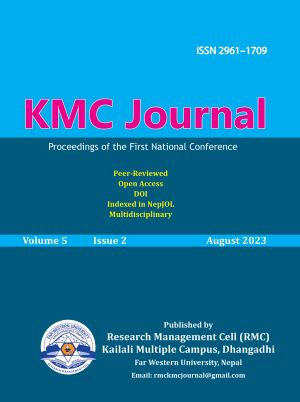An Assessment on the Trend of Urbanization in Nepal
DOI:
https://doi.org/10.3126/kmcj.v5i2.58225Keywords:
Urban, population, metropolitan city, sub-metropolitan cityAbstract
Nepal is considered as one of the least urbanized countries in the world. The pace of urbanization in Nepal in terms of economic development and infrastructural development is very low. In Nepal, even there is inconsistency in the definition of urban because Nepal has defined and redefined the meaning of urban time and again which makes us confused. Moreover, the definition has not strictly been followed even at present before declaring the certain areas to be urban ones and the number of human settlements is declared as urban even without adequate infrastructure, facilities and services. This study assesses the historical context of declaring urban centres in Nepal and the trend of population growth in urban centres which is useful for development practitioners. Secondary information has been used and analytical research design has been followed. The urban population as a percentage of the total population of the country was 2.9 since 1950s -1961 and after that it reached 4.1 percent by 1971, 6.3 percent by 1981, 9.2 percent by 1991, 13.9 percent by 2001, 17.07 percent by 2011, and 27.2 percent by 2014. According to the progress report (FY 2076/077) issued in 2020 by the Ministry of Urban Development of Nepal, the total number of municipalities after the census of 2068 is 293 when the urban population is 62.2%.
Downloads
Downloads
Published
How to Cite
Issue
Section
License
Copyright (c) 2023 2023

This work is licensed under a Creative Commons Attribution-NonCommercial 4.0 International License.
This license allows reusers to distribute, remix, adapt, and build upon the material in any medium or format for noncommercial purposes only, and only so long as attribution is given to the creator.




